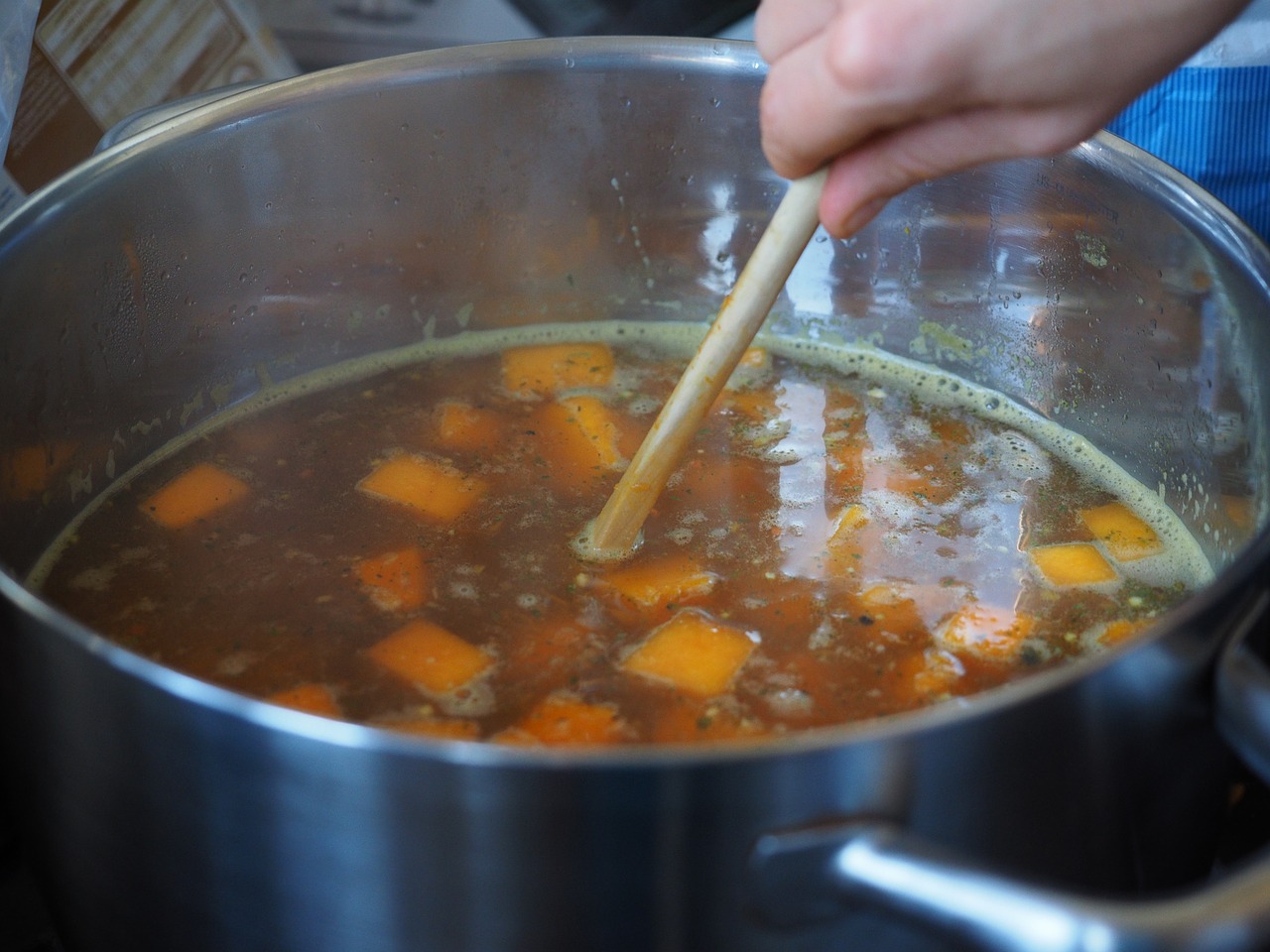
the scientific study of pet nutrition by veterinary nutrition specialists and experts.
Boiling it Down: Adding Broth to Your Pet’s Meals

Should I add broth to my pet’s meals?
Though not necessary for most pets, incorporating a broth into the diet can be a way to provide added moisture to pets that need it or as a low calorie treat. For starters, especially pets that need to watch their total calorie intake, diluting a small amount of broth with water and freezing it into a Kong toy or ice-cube tray can add variety to your pet’s diet without adding many calories. Broth can also sometimes help entice a picky pet to eat. However, it is recommended that you consult your veterinarian to make sure there is no underlying medical condition causing your pet to lose its appetite. Broth can also be a great way to add moisture to your pet’s food in some cases such as pets with a history of urinary stones.
Regardless of the reason, it is important to make sure that adding broth won’t interfere with special diets. For example, if your pet is on a strict diet due to allergies, or a special formula to reduce bladder stones, adding broth may prevent these diets from working therapeutically.
What product should I use?
While there are many commercial broth products, it is important to look at the ingredients list closely. Even “low sodium”-branded broths may be too high in sodium levels, so using commercial broth is not recommended in pets with medical conditions. Also be sure to check for other ingredients in commercial broths that may be yummy to us but are toxic to pets! Onions or garlic, especially in a concentrated form like powders, can cause vomiting and the breakdown of healthy red blood cells which can make pets very ill, so it’s safest to avoid any products with these ingredients.
Can I make my own?
Since commercial broths can vary so widely and often have undesirable or even unsafe ingredients, it’s generally lowest risk to make your own broth at home. The safest recipe is boiling unseasoned meat or vegetables in plain water to form a basic broth. However, because there is no way to determine the nutrient profile of your homemade broth, owners should always consult their veterinarian to make sure the ingredients you use are not harmful for your pet.
Take-Away: Adding broth to your pet’s food can be a tasty, low calorie addition to your pet’s diet. But as with any diet change, it is always important to consult your veterinarian first!
Written in conjunction with veterinary student, Rachel Hanford.
Want to read more information on feeding your pet?
Subscribe to always know when we add new material!
Recommended Posts

Can Diet Help With My Dog’s Seizures?
January 18, 2024

The Most Popular Holiday Foods…That Your Pet Should Avoid!
December 08, 2023

Veterinarian Recommended Pet Foods: What You Need to Know
November 05, 2023

